Class 8 Exam > Class 8 Notes > English Poorvi Class 8 - New NCERT > NCERT Solutions: Spectacular Wonders
Spectacular Wonders NCERT Solutions | English Poorvi Class 8 - New NCERT PDF Download
Let us do these activities before we read (Page 137)
I. Look at the pictures given below and sort them into natural and man-made wonders.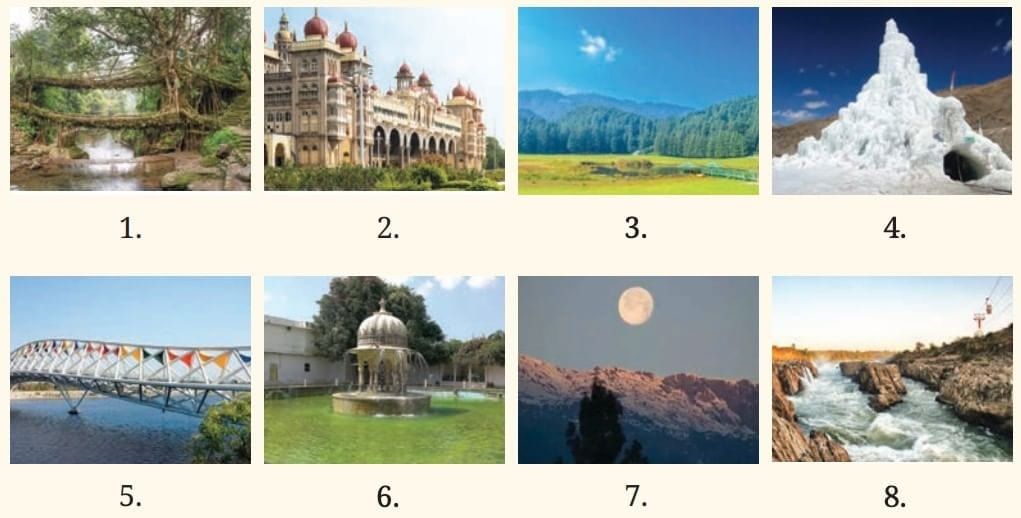 Ans: Natural:
Ans: Natural:Living Root Bridge, Dzukou Valley, Ice Stupa, and Moon over the Himalayas
Man-made:
Mysore Palace, Bogibeel Bridge, Fountain Garden, and Marble Rocks with Cable Car
II. Which of these wonders—man-made or natural—are more appealing and why? Share your answers with your classmates and teacher.
Ans: Natural wonders are more appealing because they are created by nature without any human help. They show the beauty and power of the Earth. For example, the Living Root Bridge and the Himalayas are not only beautiful but also show how nature can create amazing things over time. These places feel peaceful and make us feel close to the environment.
III. Work in pairs. Write down two wonders of nature that have amazed you. Discuss what makes them impressive.
Ans: 1. The Grand Canyon (USA) – It’s a huge valley carved by the Colorado River. Its size, colours, and rock layers show how old and powerful nature is.
2. Aurora Borealis (Northern Lights) – These colourful lights in the night sky happen in cold places like Norway and Alaska. They look magical and happen because of Earth’s magnetic field and solar winds.
What makes them impressive:
They are both natural and cannot be made by humans. They remind us of the vast and wonderful natural world.
Let us discuss (Page 142)
I. Complete the information in the table given below. One example has been done for you. Share your answers with your classmates and teacher.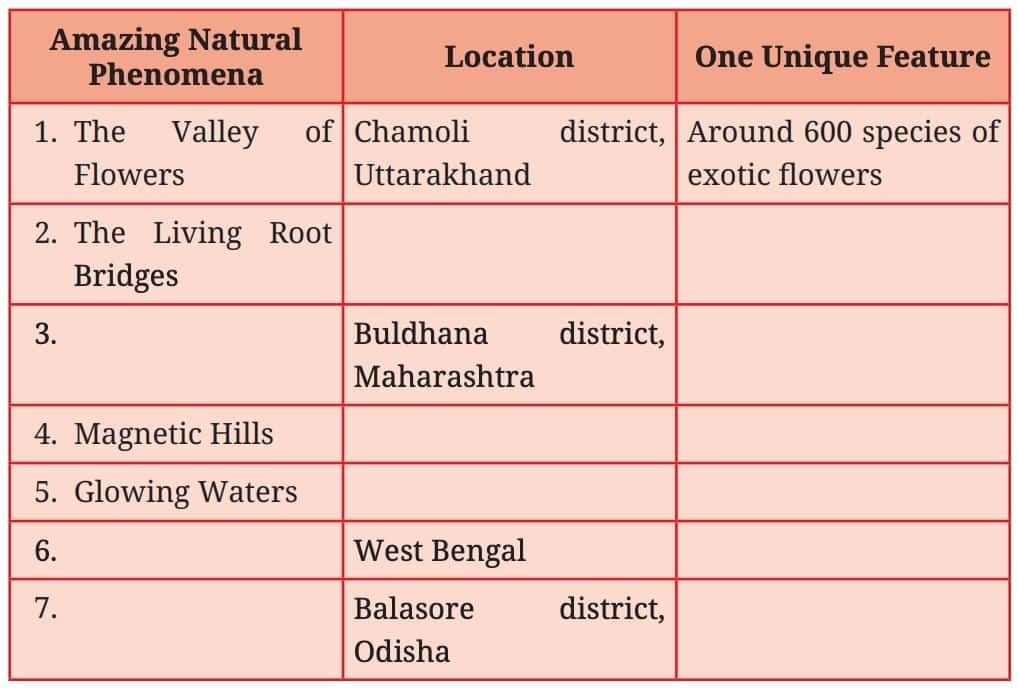 Ans:
Ans: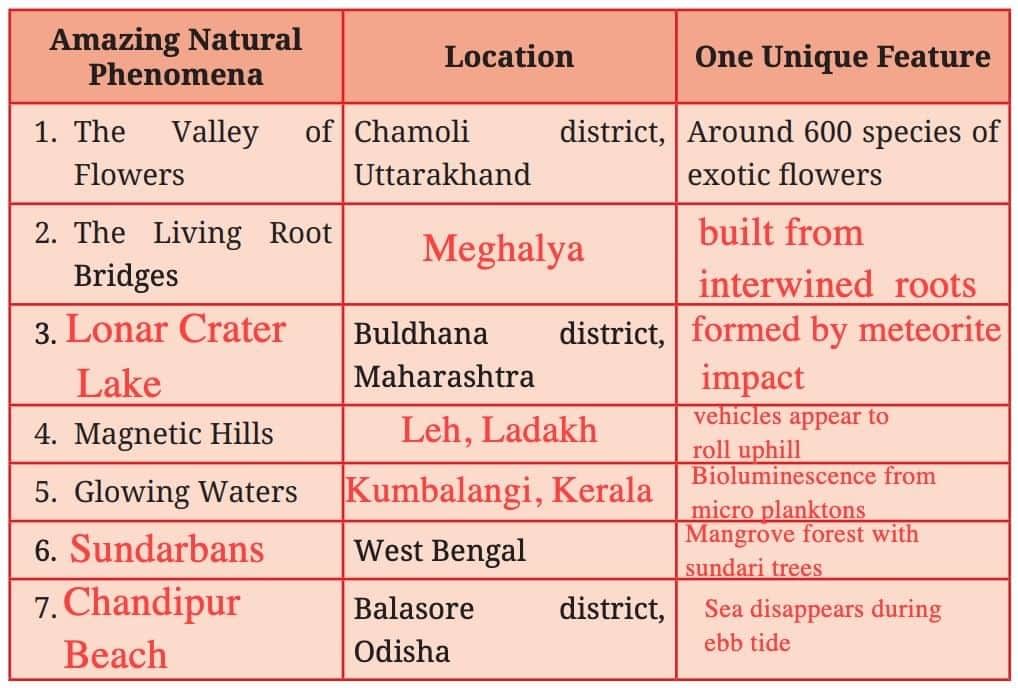
Let us think and reflect (Page 142)
I. Read the given extracts and answer the questions that follow.
1. India is home to some of the most mystifying natural phenomena that surprise and spark our imagination.
(i) Replace the underlined phrase with one from the extract. India is the birthplace of several rare species of flora and fauna that thrive in its diverse ecosystems.
Ans: nature’s unusual side
(ii) What does the phrase ‘nature’s unusual side’ suggest about the phenomena described?
Ans: It suggests rare and surprising natural events that are different from everyday nature.
(iii) Complete the similarity by choosing the correct option. spark: imagination: : ______________ : ______________.
A. inspiration; creativity
B. wonder; amazement
C. effort; reward
D. knowledge; books
Ans: B. wonder: amazement
(iv) Identify whether the following statement is true or false. Some natural phenomena can surprise people.
Ans: True
2. Have you seen things disappearing in front of your eyes? Well, such things happen at times, when we keep things in some place, and just forget where we have kept them. But what if there’s a sea that disappears? This happens in Odisha. It is a beach in the Balasore district where one can witness the sea disappearing mysteriously—the Chandipur Beach, which is known for its unique feature of playing hide-and-seek with its visitors.
(i) Complete the following sentence with a suitable reason. The writer’s most likely purpose in introducing the information about the Chandipur Beach phenomenon with a question is to____________________. (engage the reader’s curiosity and create a sense of suspense/draw the reader to learn more about the unusual phenomenon/set the tone for the surprising nature of the content that follows)
Ans: engage the reader’s curiosity and create a sense of suspense
(ii) Select the option that is correct for both Assertion (A) and Reason (R).
(A): Chandipur Beach in Odisha is known for its unique feature of the sea disappearing.
(R)The tides retreat drastically, exposing the Chandipur beach.
A. Both (A) and (R) are true, and (R) is the correct explanation of (A).
B. Both (A) and (R) are true, but (R) is not the correct explanation of (A).
C. (A) is true, but (R) is false.
D. (A) is false, but (R) is true
Ans: A. Both (A) and (R) are true, and (R) is the correct explanation of (A).
(iii) What does the term ‘unique’ suggest about the beach in Balasore?
A.very popular
B. one of its kind
C.ancient place
D.far from the city
Ans: B. one of its kind
(iv) What does the writer want to convey with the use of the phrase ‘playing hide-and-seek with its visitors’?
Ans: The sea appears and disappears due to changing tides, creating a playful and mysterious effect for the visitors.
II. Answer the following questions.
1. How are the living root bridges a boon for the local people of Meghalaya?
Ans: They allow safe crossing over waterways during monsoons, unlike weak bamboo bridges.
2. Why is the Lonar Crater Lake considered a remarkable and rare site?
Ans: It’s formed by a meteorite impact in basaltic rock, one of the top five largest craters globally, with a unique saline lake.
3. What might be the writer’s purpose of highlighting the awe-inspiring natural wonders of India?
Ans: To show India’s unique landscapes, spark curiosity, and encourage appreciation of nature.
4. The writer uses descriptive language and introductory questions for some of the natural phenomena. What impact does it have on the readers?
Ans: It grabs attention, makes the phenomena vivid, and encourages readers to think and imagine.
5. Which of these unusual phenomena did you find the most interesting and why?
Ans: The Living Root Bridges, they are built naturally by intertwining roots, showing human creativity and harmony with nature.
Let us learn (Page 144)
I. Fill in the blanks with the correct expressions from the text given in the box below.
- I have read many stories _____________________.
Ans: to name a few - Do you know when this little town _____________________?
Ans: came into existence - His hard work has helped him _____________________.
Ans: to no end - There are no simple solutions to the _____________________of traffic jams.
Ans: age-old problem - He opened the ancient wooden box and stared at the treasure_____________________.
Ans: in disbelief - The garden is _____________________ in springwith lots of beautiful flowers in bloom.
Ans: in full glory
II. Select the correct synonyms from the box given below that match the list of words in 1–5. You may refer to a thesaurus. 
- mysterious, puzzling, baffling
- mighty, gigantic, huge.
- breath-taking, stunning, awe-inspiring.
- peaceful, calm, tranquil
- unusual, peculiar, foreign
Ans:
- mysterious, puzzling, baffling → enigmatic
- mighty, gigantic, huge → colossal
- breath-taking, stunning, awe-inspiring → spectacular
- peaceful, calm, tranquil → serene
- unusual, peculiar, foreign → exotic
III. The expressions ‘hide-and-seek’ and ‘flora and fauna’ are used in the text. These are called binomials—a pair of fixed words joined by ‘and’ or ‘or’. The binomials are mostly synonyms, antonyms, rhyming words, same-sound words (alliterations), etc. Match the binomials in Column 1 with their meanings in Column 2. You may refer to a dictionary.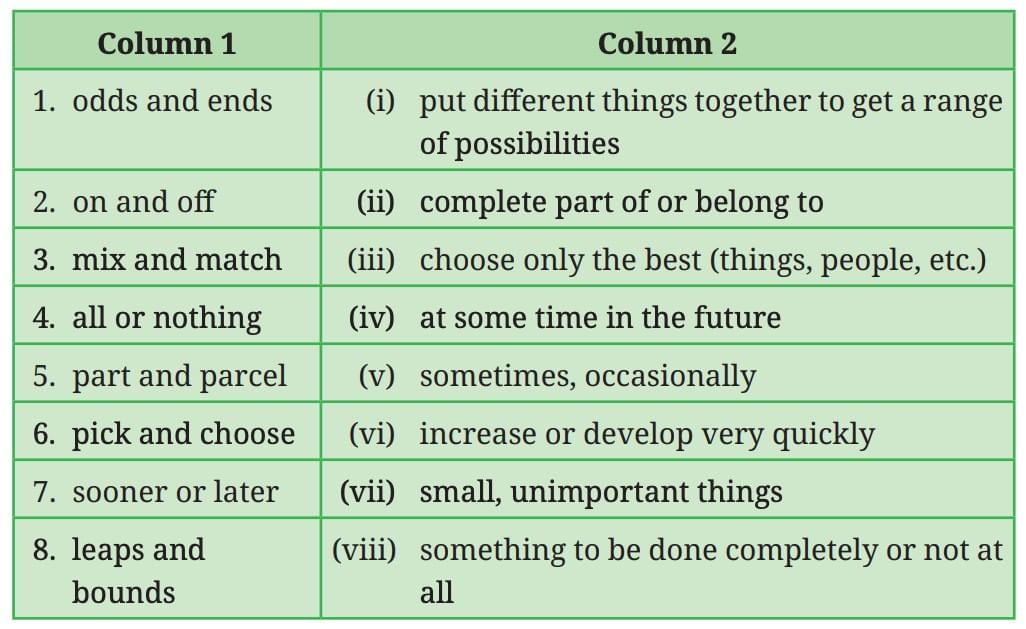
Ans: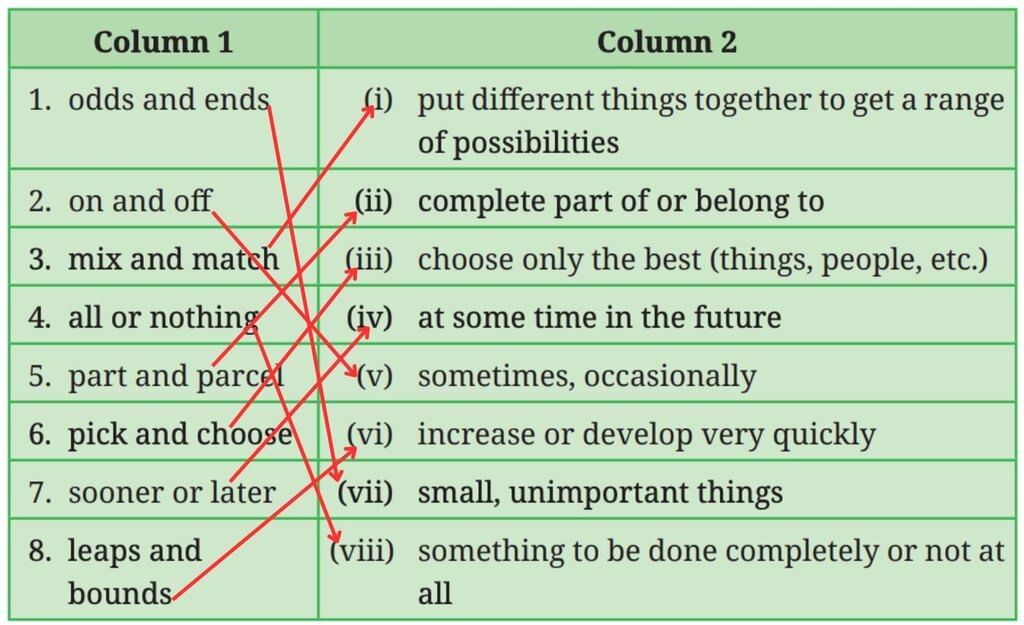

Sentences:
1. I cleaned my room and found odds and ends like old pens and buttons.
2. She visits the park on and off when she has free time.
3. I like to mix and match my clothes to create new outfits.
4. This project is all or nothing; we must finish it completely.
5. Helping others is part and parcel of being a good friend.
6. At the store, I can pick and choose the best apples.
7. Sooner or later, I’ll visit the Valley of Flowers.
8. Her drawing skills improved by leaps and bounds this year.
IV. Study the highlighted words in the following sentences from the text.
- The living root bridges are one of Meghalaya’s most beautiful…
- …creating a striking visual contrast against the surrounding rugged terrain.
In the given sentences, the highlighted words ‘living’, ‘striking’, and ‘rugged’ are examples of verbs used as adjectives. Such verbs are called participles.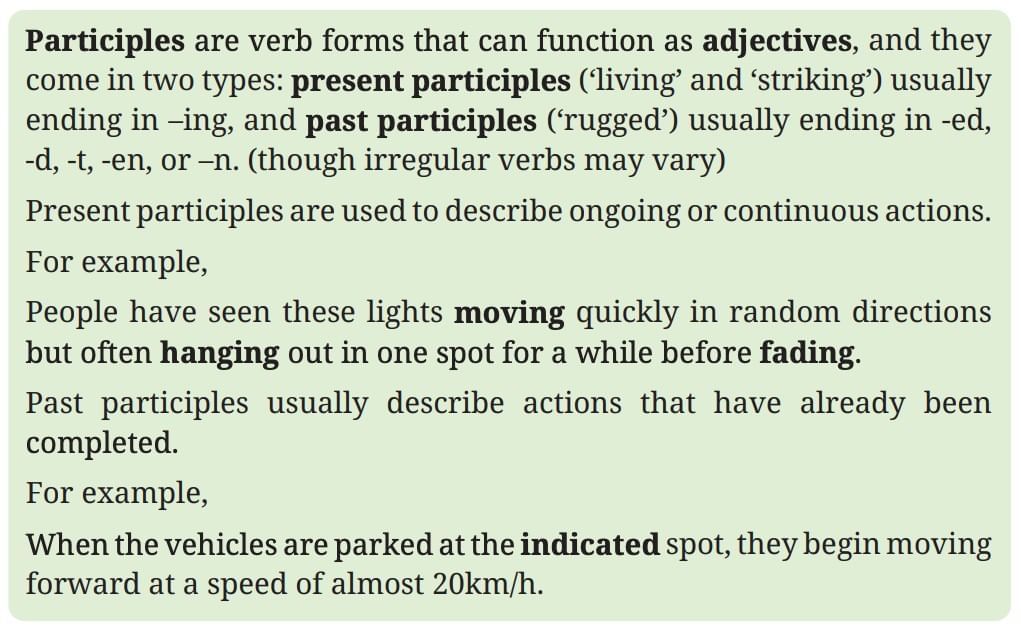 Now, fill in the blanks using the present participle or past participle form of the verbs in the box given below.
Now, fill in the blanks using the present participle or past participle form of the verbs in the box given below. 1. The _______________ marble monument looks even more spectacular inthe moonlight.
1. The _______________ marble monument looks even more spectacular inthe moonlight.
Ans: glowing
2. The _______________ view of the Himalayas from Darjeeling attracts visitors from all over the world.
Ans: amazing
3. The Sun Temple in Konark features intricately _______________ stone wheels and walls.
Ans: carved
4. _______________ at a height of 182 m, the Statue of Unity is dedicated toSardar Vallabhbhai Patel.
Ans: Standing
5. The _______________ islands of the Andaman and Nicobar offer some of the cleanest beaches in India.
Ans: scattered
V. Study the highlighted word in the following sentence from the text
Crossing the many waterways without bridges was difficult for people in the past, during monsoons. In the given sentence, the highlighted word ‘crossing’, is one example of a verb used as a noun. Such a verb is called a gerund.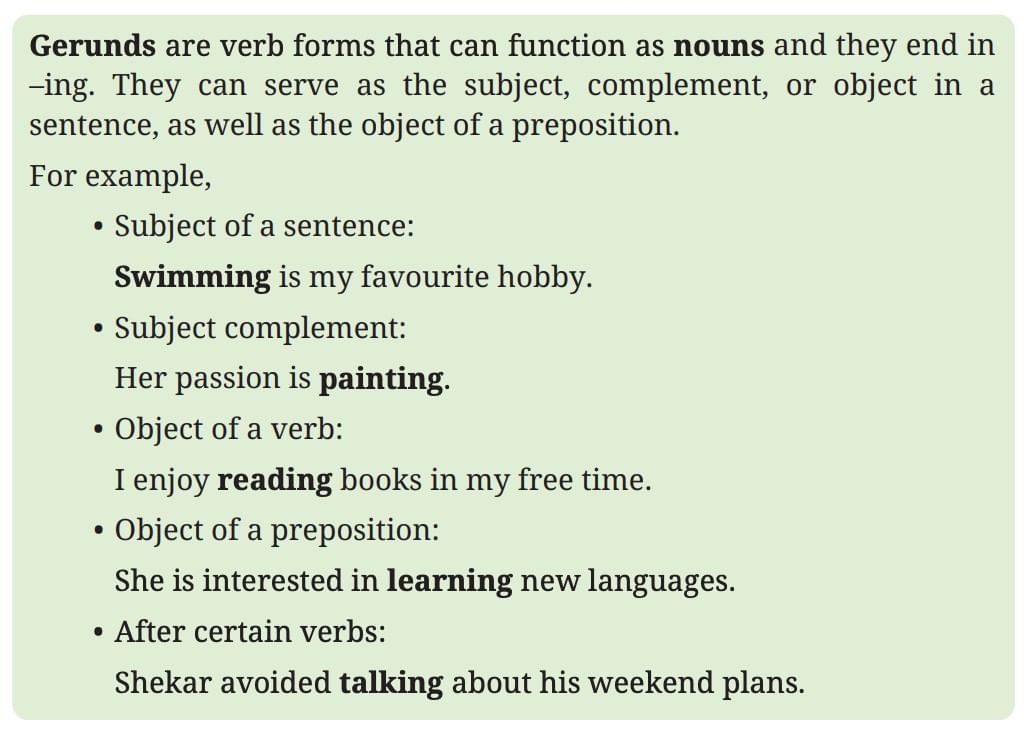 Underline the gerunds and participles in the following sentences. Write ‘G’ for gerunds and ‘P’ for participles in the space provided. One example has been done for you.
Underline the gerunds and participles in the following sentences. Write ‘G’ for gerunds and ‘P’ for participles in the space provided. One example has been done for you.
1. Dancing is a great way to express emotions. G
2. Travelling can broaden your perspective.
3. The falling leaves signalled the arrival of autumn.
4. She enjoys cooking new recipes for her family.
5. Reading helps improve your vocabulary.
6. He watched the shimmering stars in the night sky.
7. Forgetting the keys inside, Kanchan locked the door.
Ans:
1. Dancing is a great way to express emotions. G
2. Travelling can broaden your perspective. G
3. The falling leaves signalled the arrival of autumn. P
4. She enjoys cooking new recipes for her family. G
5. Reading helps improve your vocabulary. G
6. He watched the shimmering stars in the night sky. P
7. Forgetting the keys inside, Kanchan locked the door. P
VI. Combine the following pairs of sentences using participles or gerunds. You may use the clues given in brackets. One example has been done for you.
1. Nitesh entered the room. He saw his friend sitting in the corner. (participle)
Ans: Entering the room, Nitesh saw his friend sitting in the corner.
2. Smitha walked carelessly. She slipped on the doormat. (participle)
Ans: Walking carelessly, Smitha slipped on the doormat.
3. Sleep for eight hours. It is good for health. (gerund)
Ans: Sleeping for eight hours is good for health.
4. Ranjith felt happy about the result. He called his parents. (participle)
Ans: Feeling happy about the result, Ranjith called his parents.
5. Father encouraged Meena. Meena joined the course. (gerund)
Ans: Encouraged by her father, Meena joined the course.
Let us listen (Page 148)
I. You will listen to a brother and sister discuss a natural phenomenon. As you listen, mark the four true statements from 1–6 given below.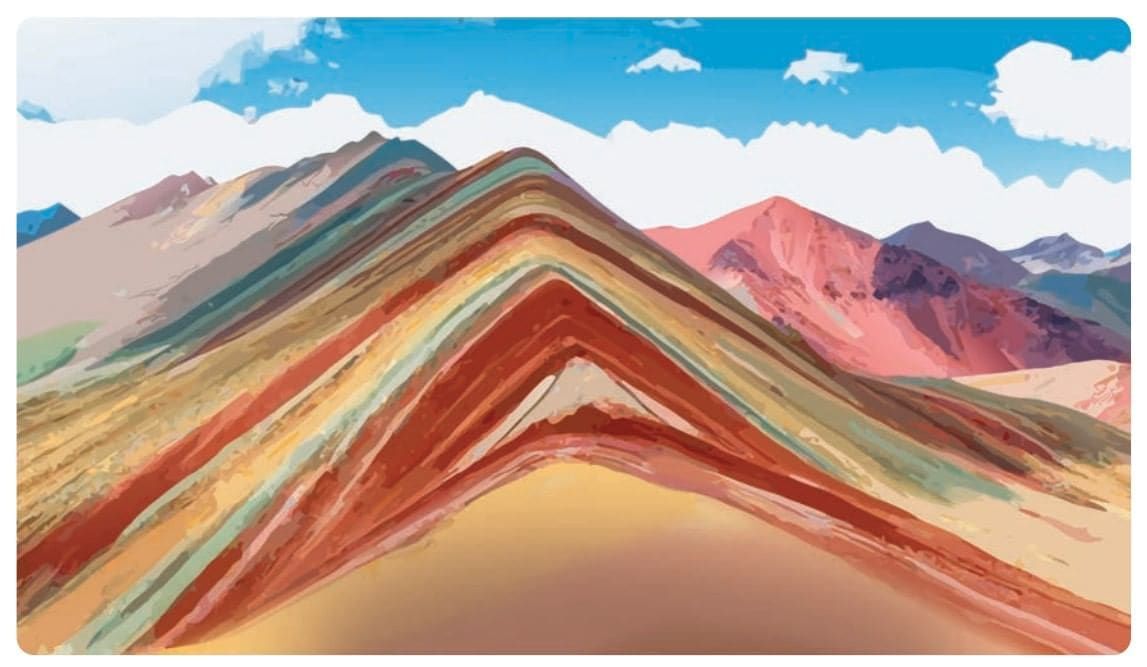
1. The brother was taken aback to see the posted pictures.
2. The brother admitted to not knowing about his sister’s favourite picture.
3. The sister stated that the rainbow mountain was like any other mountain.
4. The brother was aware of the reason for the formation of colours on the mountain.
5. The brother was surprised to learn about the mountain being covered with snow till recently.
6. The sister understood nature’s role in the beauty of the mountain.
Ans: True statements: 2, 4, 5, 6
Let us speak (Page 149)
I. Work in groups of four. Make a presentation on a place of interest in and around your region that people like to visit. You may use the following guidelines to make your presentation.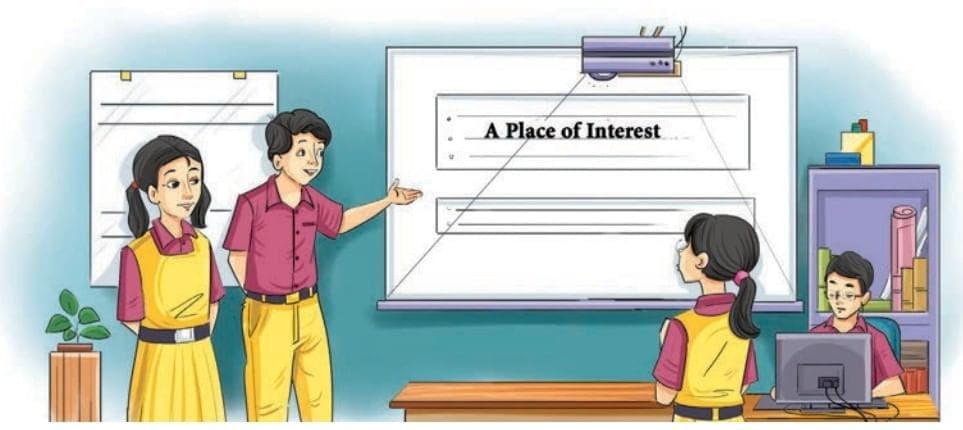 Guidelines:
Guidelines: 1. Slides 1–2: Choose any popular place of interest in your region.
2. Slides 3–4: Mention where it is located and how to get there.
3. Slides 5–6: Describe the attractions of the place, why it is popular and explain its historical importance, if any.
4. Slides 7–8: List out weather conditions, local food, customs, and language.
5. Slides 9–10: Suggest the best time of the year to visit and why you recommend this place.
Ans:
Slide 1-2: Place - Qutub Minar, Delhi.
Slide 3-4: Location - In Mehrauli, Delhi; reachable by metro (Qutub Minar station) or bus.
Slide 5-6: Attractions - Tallest brick minaret, built in 1192 by Qutb-ud-din Aibak, with intricate carvings; historically important as a symbol of the Delhi Sultanate.
Slide 7-8: Details - Pleasant weather in winter; local food like parathas; Hindi and English spoken; respect monument rules.
Slide 9-10: Best Time - October to March for cool weather; recommended for its historical beauty and architecture.
Let us write (Page 149)
I. You just read vivid descriptions of the natural wonders of our country. Write a descriptive essay for your school magazine describing anything from nature that attracted your attention. It may be an object, a place, or an event experienced by you. Remember to give a title to your essay. Use proper format and content organisation—begin with a title, including an introduction (one paragraph), body (two to three paragraphs), and conclusion (one paragraph).Ans:
A Sparkling Night at Kumbalangi
Last summer, I visited Kumbalangi village in Kerala, and its glowing waters left me spellbound. As night fell, the backwaters twinkled like a sky full of stars, a magical sight I’ll never forget.
The village was quiet, with lush green trees rustling in the breeze. At dusk, we took a boat ride, and soon, the water began to glow with tiny blue-green sparkles. These were micro-planktons, tiny creatures creating bioluminescence. Each ripple in the water sent sparkles dancing, like fireflies in the sea. The air smelled fresh, and the sound of gentle waves was soothing. I dipped my hand in, and the water glowed around my fingers, making me feel like I was in a fairy tale.
The villagers explained that this natural wonder happens when micro-planktons are active, especially on warm nights. I also enjoyed their spicy fish curry and learned about their fishing traditions. The glowing waters felt like nature’s secret light show, teaching me how even tiny creatures can create something extraordinary.
This experience showed me the beauty of nature’s surprises. Kumbalangi’s glowing waters are a treasure, reminding us to explore and protect our environment.
Let us explore (Page 150)
I. Man-made Wonders
1. Kallanai Dam (The Grand Anaicut) in Tamil Nadu is one of the world’s oldest dams and is still in use. The Kallanai Dam represents a significant achievement in ancient Indian hydraulic engineering. It was built by the Chola King Karikala around 150 CE.
2. Another spectacular legacy of ancient wisdom that we have is the world’s fist residential university at Nalanda in Bihar. Nalanda was established much before any European university, providing higher education to thousands of students. It was declared as a UNESCO heritage site in 1980. You may visit the site given below to know more about this. https://nalandauniv.edu.in/about-nalanda/history-and-revival/
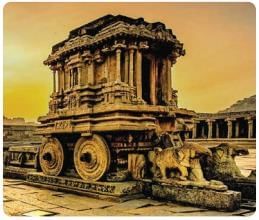
3. Hampi, a town in Karnataka, is also a UNESCO World Heritage Site. The Vittala Temple in Hampi was built in the 15th century. This temple has 56 special pillars known as the SaReGaMa pillars. When these pillars are tapped, they produce musical notes that can be heard clearly.
4. Some of the man-made wonders of modern India include the Bandra–Worli Sea Link in Mumbai; Statue of Unity in Gujarat; Bhupen Hazarika Setu (The Dhola-Sadiya Bridge) in Assam; and many more.
Ans: Do it yourself
II. Some micro-planktons in the sea are bioluminescent. Have you seen any other life form that has this quality? Identify the insect given below and find out what it is called in your language. Look out for it when you visit a field or a place with a wetland.
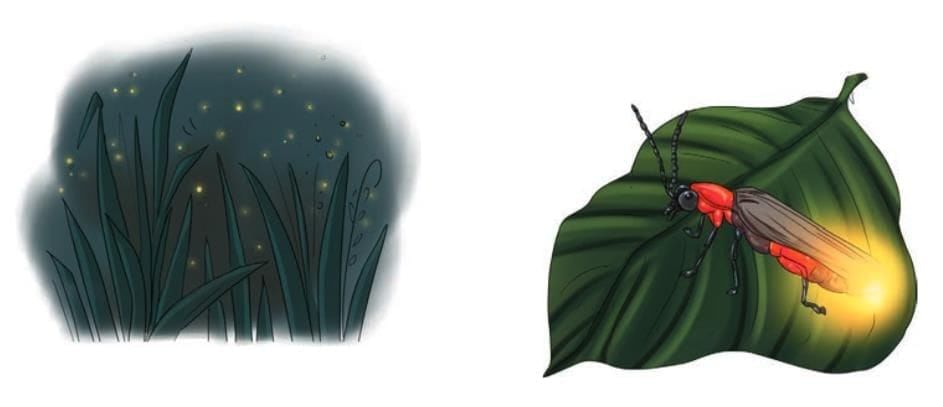
Ans:
- Insect Shown: Firefly
- Bioluminescence: Fireflies produce light from their abdomen due to a chemical reaction, similar to the micro-planktons.
- Common Names in Indian Languages:
- Hindi: Jugnu
- Malayalam: Minnaminungu
- Tamil: Minnal Poochi
- Bengali: Jonaki Poka
- Telugu: Deepa Purugu
- Marathi: Jugas
The document Spectacular Wonders NCERT Solutions | English Poorvi Class 8 - New NCERT is a part of the Class 8 Course English Poorvi Class 8 - New NCERT.
All you need of Class 8 at this link: Class 8
|
58 videos|435 docs|57 tests
|
FAQs on Spectacular Wonders NCERT Solutions - English Poorvi Class 8 - New NCERT
| 1. What are some key themes discussed in the article "Spectacular Wonders"? |  |
Ans. The article "Spectacular Wonders" explores various themes such as the importance of learning from nature, the significance of creativity in communication, and the impact of literature on society. It emphasizes the value of reflection and listening as tools to gain knowledge and understanding, encouraging readers to engage actively with the world around them.
| 2. How can one effectively listen and learn from the content presented in "Spectacular Wonders"? |  |
Ans. To effectively listen and learn from "Spectacular Wonders," one should approach the material with an open mind, take notes on key points, and reflect on personal insights. Engaging in discussions about the content can enhance understanding, and asking questions can clarify any uncertainties. Active listening, which involves focusing fully on the speaker and processing the information, is crucial for deeper comprehension.
| 3. What techniques are suggested for speaking and writing about the wonders discussed in the article? |  |
Ans. The article suggests that to speak and write effectively about the wonders discussed, one should practice clarity and coherence in expression. Organizing thoughts logically before speaking or writing is important. Additionally, using descriptive language and examples can make the communication more engaging. It is also recommended to revise written work for grammar and structure to improve overall quality.
| 4. Why is reflection considered important in the context of "Spectacular Wonders"? |  |
Ans. Reflection is considered important in "Spectacular Wonders" as it allows individuals to process their experiences and learn from them. Reflecting on what one has learned encourages critical thinking and personal growth. It helps to connect new knowledge with existing understanding, fostering a deeper appreciation for the subject matter.
| 5. How does the article encourage creativity in learning and communication? |  |
Ans. The article encourages creativity in learning and communication by highlighting the importance of exploring different perspectives and approaches. It suggests that embracing imagination and innovation can lead to more effective ways of expressing ideas and solving problems. Engaging with various forms of art and literature is also recommended as a means to inspire creativity and enhance communication skills.
Related Searches





















